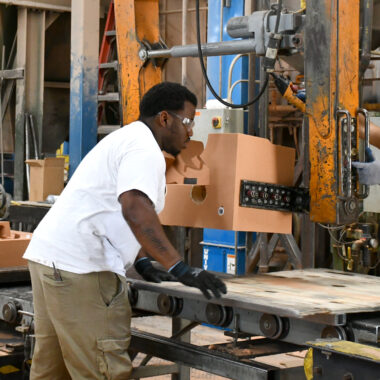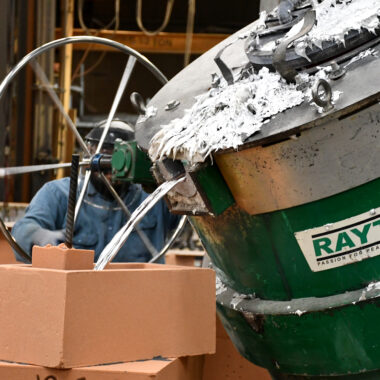Elevate Your Creations With Precision Aluminum Casting Techniques
Precision light weight aluminum casting techniques supply a refined approach to changing raw materials right into complex and durable developments. The meticulous procedure of aluminum spreading unlocks a world of possibilities for designers and designers looking for to raise their tasks to new heights.
Advantages of Precision Aluminum Spreading
Precision light weight aluminum casting provides a myriad of advantages in regards to product, effectiveness, and cost-effectiveness quality. Among the main benefits of accuracy light weight aluminum casting is the ability to produce complex shapes with high dimensional precision. This process enables elaborate designs and exact details to be reproduced consistently, making sure that the end products meet the needed requirements.

In addition, the procedure of precision aluminum casting causes very little product waste, making it a sustainable production option. By utilizing just the required quantity of aluminum required for the spreading, this method assists reduce general manufacturing costs and lessens ecological impact.

Sorts Of Aluminum Spreading Procedures
Having explored the advantages of precision aluminum spreading, the focus currently moves towards understanding the numerous types of light weight aluminum spreading processes readily available in producing industries. Pass away casting, one of the most common approaches, involves infusing molten light weight aluminum into a steel mold at high stress.
Financial investment casting, on the other hand, uses a wax pattern that is covered in ceramic and after that melted to leave a mold tooth cavity for light weight aluminum spreading. Each of these light weight aluminum casting processes has its one-of-a-kind advantages, providing to various requirements and requirements in the production sector.

Devices and Devices Required
What crucial devices and equipment are needed for successful light weight aluminum casting procedures in manufacturing markets? Precision light weight aluminum spreading techniques require a specific collection of devices and devices to ensure high-grade and precise outcomes. Crucially, a heater is important for thawing the aluminum to its fluid kind before spreading. Crucibles, which are containers made from products that can endure high temperature levels, are used to hold and put the molten aluminum right into molds. In addition, mold and mildews are needed to shape the light weight aluminum right into the desired kind. These mold and mildews can be made of different materials such as sand, ceramic, or steel, depending on the intricacy of the layout. To help with the pouring of liquified aluminum into mold and mildews, a ladle or putting system is required. Various other devices like tongs, handwear covers, and safety tools are vital to handle the warm steel safely. Additionally, an air flow system is essential to make sure a safe workplace by getting rid of fumes and gases produced during the spreading procedure. By buying the right tools and equipment, makers can attain precise and effective aluminum casting outcomes.
Design Considerations for Casting
Successful aluminum spreading procedures in making markets need careful consideration of design elements to guarantee optimal results. When making for light weight aluminum casting, one should pay interest to elements such as part geometry, wall density, draft angles, and fillets. Component geometry plays a critical role in determining the complexity of the casting process and the top quality of the end product. It is vital to develop components with uniform wall surface density to advertise solidification uniformity and reduce the danger of flaws like porosity. Integrating ideal draft angles helps with simple component ejection from the mold, reducing the chances of damage and issues.
Moreover, adding fillets to sharp edges aids in decreasing stress and anxiety concentrations and boosting the overall architectural stability of the actors component. Developers must additionally consider the location of parting lines and gating systems click this link to guarantee appropriate steel circulation and solidification. aluminum casting illinois. By thoroughly attending to these style factors to consider, suppliers can attain top notch light weight aluminum spreadings that fulfill efficiency needs and boost the efficiency of the manufacturing process
Completing Techniques for Aluminum Castings
Accuracy and careful finishing strategies play a critical duty in improving the aesthetic allure and practical performance of aluminum spreadings in different industrial applications. After the spreading procedure, aluminum parts commonly require ending up to attain the preferred surface area high quality and qualities.
In addition, aluminum spreadings can undergo surface therapies such as shot sanding or blasting to remove any type of imperfections or harsh areas left from the spreading process. These strategies not only boost the visual look of the casting yet also make certain dimensional accuracy and surface area stability. Plating is one more preferred ending up approach that provides light weight aluminum castings with enhanced corrosion resistance, use resistance, and aesthetic alternatives via various color choices.
Conclusion
In final thought, accuracy aluminum casting offers numerous advantages for developing top notch products. Understanding the various types of casting processes, needed tools go to this web-site and equipment, design factors to consider, and ending up techniques is vital for achieving effective results. aluminum casting illinois. By implementing these methods, suppliers can boost their developments and generate elaborate and precise aluminum castings for different applications
Having actually checked out the advantages of accuracy aluminum casting, the emphasis currently shifts towards recognizing the numerous types of light weight aluminum casting processes available in manufacturing industries. Financial investment spreading, on the other hand, uses a wax pattern that is coated in ceramic and then thawed to leave a mold cavity for light weight aluminum my company spreading.Effective light weight aluminum casting processes in manufacturing sectors call for careful consideration of layout facets to make sure optimal outcomes. By thoroughly attending to these design considerations, producers can achieve high-grade aluminum castings that satisfy efficiency requirements and boost the efficiency of the manufacturing process.
Furthermore, aluminum spreadings can go through surface area treatments such as shot blasting or fining sand to remove any kind of blemishes or harsh locations left from the spreading procedure.